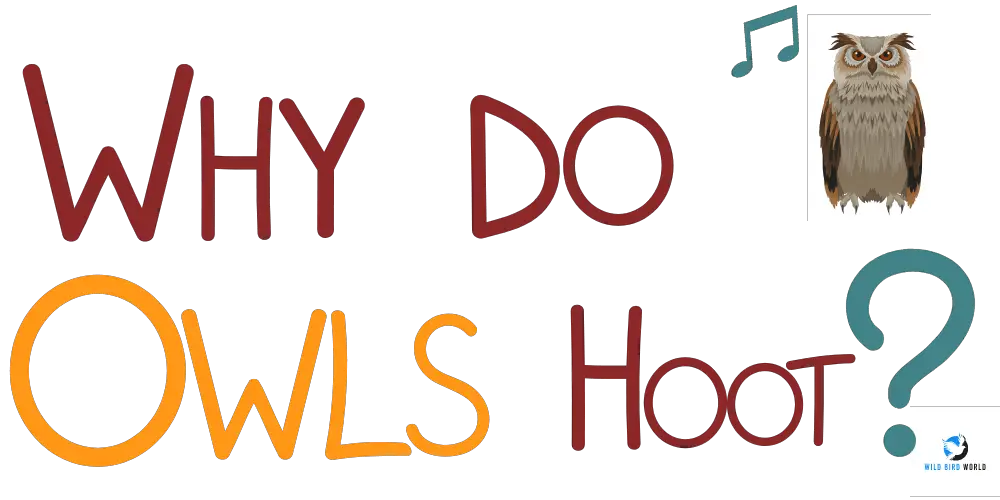
Owls are without a doubt one of the more interesting creatures around. These fearsome predators are not only beautiful, but they are also incredibly adept hunters known for their unique talents and ritualistic behaviors. Most of us have heard an owl hoot at some point in our lives, even if it was only in a movie.
Though owls are often depicted letting out a solid hoot to frighten an unsuspecting character in a movie, the reality is that owl language is a little bit more complicated than that. Hooting is what owls use to communicate, and there are many different reasons for them to do it.
They might be hooting for themselves, hooting for a mate, or even hooting to make an alert. The reason is largely up to the owl, but there are a few main instances that might cause an owl to hoot. In this article, we will explore the hooting of an owl and what it can mean.
Table of Contents
Reasons Why An Owl Might Hoot
Though a hoot might just sound like a funny or startling sound to us, the fact is that hooting is how owls talk. Every owl species has a distinctive hoot that they use to interact with each other, and the nature and sound of the hoot can change quite a lot depending on the meaning behind it.
Though you personally might not be able to speak owl, the fact is that owls make a great many alterations to their hooting pattern to be understood by their fellow owls. In fact, owls are actually more human than you might think. Sometimes an owl might be heard hooting when there aren’t any other owls present, as if they are talking to themselves. In this section, we will address what circumstances warrant owl conversation.
1. Territory
One of the major reasons that you might hear an owl hooting is to assert its dominance over an area. Owls, specifically male owls, are known to spend time claiming an area with a few good hoots throughout the day or night. They use this to tell other male owls in the area that they have taken over space and don’t want any visitors. There are actually a few reasons that an owl might do this.
The owl is a territorial creature that is known for its adept hunting skills. When an owl finds an area that has a good supply of food, a single owl might roost and decide to stay there. The owl will often let out continuous hoots to alert other owls in the area that the hunting space has already been taken and that trespassers are not welcome.
In many ways, it is the owl way of telling other owls that they will not be invited over for dinner and will face repercussions if they are found infiltrating the space. More often than not, owls are sending this message to other owls in their species. However, several species are known to claim similar areas, so the owls might be alerting a completely different kind of owl to their presence as well.
In addition to a good hunting space, owls are known to look for good nesting spaces as well. Depending on the type of owl, it can vary whether the male or female chooses the area for the nesting space. Either way, both kinds of owls are very interested in protecting their space.
Owls are known to be incredibly territorial when it comes to protecting their babies. It is incredibly common for owls to let out a good hoot to alert other owls in the area that they have claimed it for their family. Considering the fact that some kinds of owls are known to actively hunt and eat smaller birds, it is important to scare them off. Parent owls might call out a good hoot as a warning that trespassers will be attacked.
2. Warn Off Offending Owls
Owls are fairly quiet creatures a lot of the time, so it comes as no surprise that it is possible for one owl to sneak up on another owl. When an owl is perched in a tree looking down at the ground for a tasty mouse, it might not notice that another owl has entered its area while on their nightly hunt.
Though this can spark a fight, the reality is that owls would rather eat a good meal then jump straight to fighting, which is why they are more likely to send a warning first. An owl might spot another owl somewhere in their area and send out a good hoot to warn the other owl that the area has already been taken and send them packing.
3. Announce Themselves In An Area
The majority of owls are fairly solitary creatures and have very little interest in spending time around other owls. Since this is the case, many owls are known to extend a nice courtesy where their owl friends are involved and announce themselves.
Owls can use this when visiting a new area or while they are out for a hunt. Think of it as the owl’s way of simply checking in and asking if someone is home before moving in. Not all owls do this, but polite owls or owls that really aren’t looking for a fight often do.
4. Alert The Presence of Food
This is a fairly rare sound, but it is shared by some of the more unique owls. Though the majority of owls prefer a good solo act, other owls are known to hunt in a shared space. For this reason, some owls might use this as an opportunity to alert their fellow owl friends that there is a good area to hunt in.
It is also possible for owls to do this with a mate. In many ways, it is the owl equivalent of ringing the dinner bell so that everyone can partake in the feast. Most owls do not engage in this kind of behavior, but the ones that do can benefit from the community element, particularly in relation to predators.
5. Find A Mate
You might notice that some owls are more vocal during certain times of the year. This can simply mean that there are more owls in the area because of the migratory nature that some of them have. However, more often than not, a loud owl hooting is out looking for a nice mate. Owls hoot to call out to potential mates in the area. For many owl species, this is a primary part of the mating cycle and happens in one or two different ways.
Sometimes an owl, generally a male owl, will enter a space and hoot to call out to female owls in the area. It is their way of announcing themselves and making their presence known so that girls that know that there is an eligible bachelor in the area. Not only does this make their presence known, but it can actually lure some potential mates closer. It is fairly common for them to hear the call and want to investigate to see if the owl really lives up to his hoot and is worth nesting with.
Though the general hoot to attract girls in the area is common, an owl is also likely to hoot quite a bit if they actually see a potential mate. Owls will hoot, and others will even follow other mating rituals, to convince the pretty girl that they are worth mating with. It is common for an owl to spot a lucky lady and repeatedly call out to her to get her attention and begin the process of determining if they are a good match.
Male owls are not the only owls who hoot in a mating situation. In fact, female owls will often hoot in response to male owls that they hear in the area. A male owl might call out, and a female owl will return with another hoot to alert the male that she is around and might be interested in mating. This is an opportunity for owls to open up a sort of dialogue. Instead of going to the male owl, the female owl might carry a conversation and let him come to her instead.
6. Communicate With Mates
Many different kinds of owls mate for life, so it comes as no surprise that their matches are known to engage in a great many conversations. A mated pair of owls will talk to each other quite a lot for a few different reasons and are even known to use special sounds when it comes to the love of their life. For owls, there is quite literally a love language.
One reason that owls might hoot at their mates is simply to have a conversation. Owls have a specific language, and it is common for a mated pair to chat with one another, particularly if they are not directly with each other. A female owl might be calling out from the nest while the male owl hunts and vice versa. They can also communicate when it comes to sharing information surrounding threats and hunting.
In addition to simple chatter, owls will use hooting to reconnect with their mates. Even though owls often mate for life, it doesn’t necessarily mean that the owl pair will always stay together physically. Some owls are known to separate and reconnect specifically during mating season. When the two owls return to an area, they will call out to one another and, based on their specific sounds and language, reconnect with each other in an area filled with other owls. This is a particularly beneficial communication technique for migratory species that might lose each other during travel.
Why Do Owls Hoot At Night?
There is a commonly shared sentiment that owls specifically hoot at night and while it is somewhat true, it is also a little incorrect. Many owls can be heard hooting at night, but that doesn’t mean that the owl doesn’t hoot during the day.
The fact is that owls can be broken down into three individual classes, and depending on where the owls fall in their classification, they are more likely to hoot at different hours. The notion that owls hoot specifically at night is simply a natural deduction based on the fact that many owls are more active at night.
To help you understand the differences, we will break down the three classifications so you know what class of owl you are probably hearing.
What different types of Owl are there?
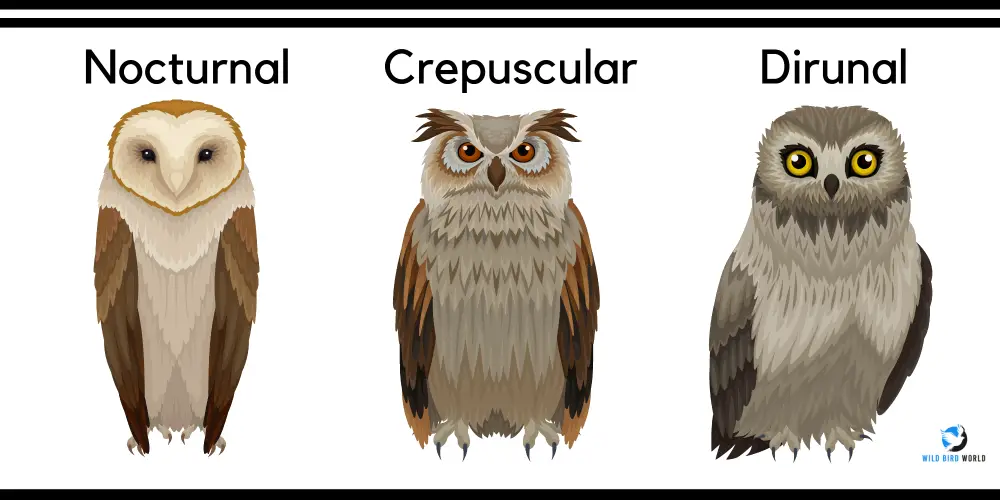
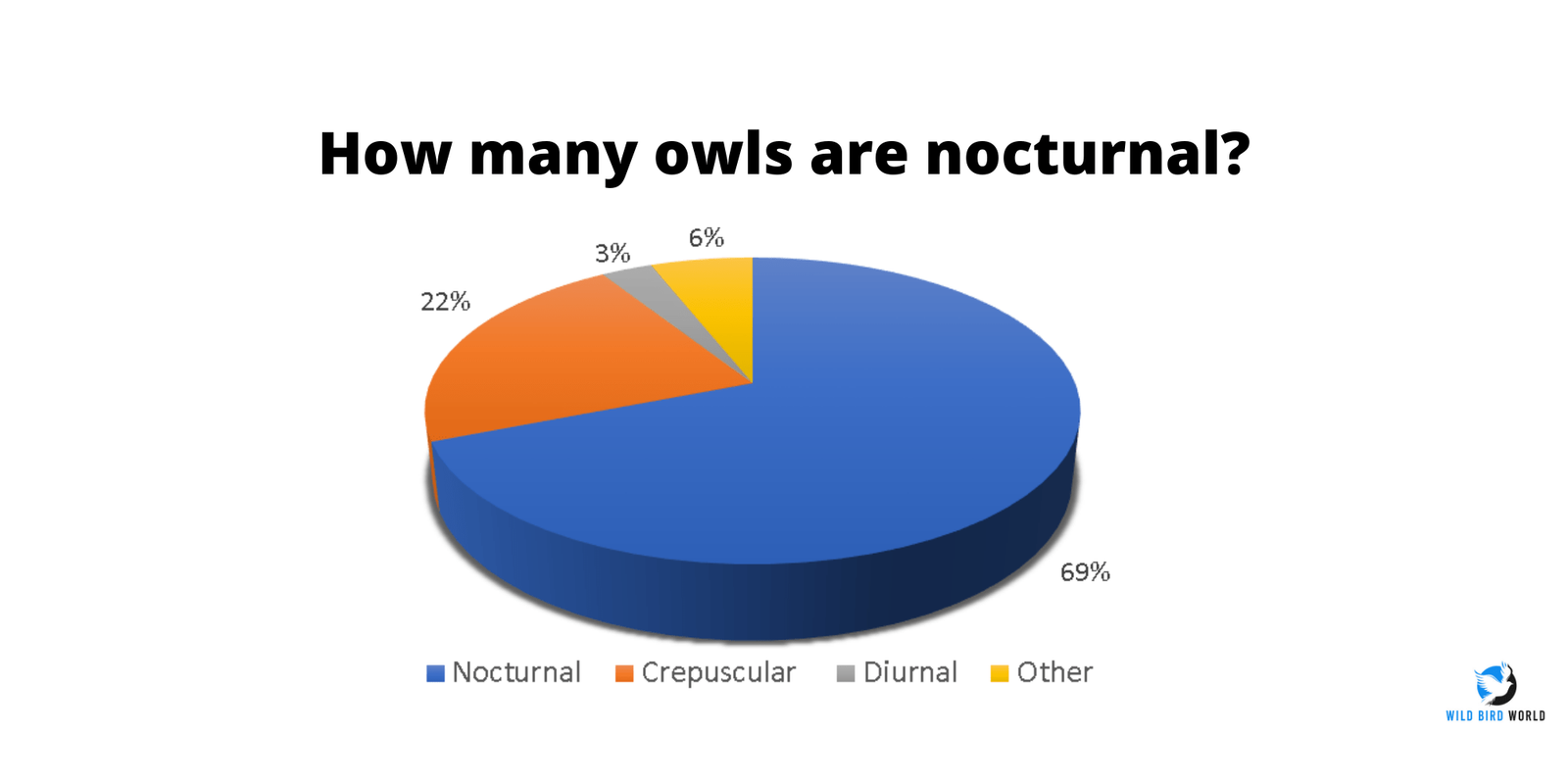
Nocturnal Owls
A wide majority of owls are nocturnal, which means that they are most active at night. These owls will hunt when it gets dark, which is why you can sometimes hear their hoots off in the distance if you listen for them. These owls are able to see well at night and use the cover of darkness to hunt and move around. Traditionally, you can find these owls sleeping during the day.
Nocturnal owls are known to possess a few key traits, but the easiest way to pick them out is by their eyes. A nocturnal owl will almost always have dark, rich eyes. These eyes can be reflective in nature and make it possible for them to see animals scurrying on the ground below with incredible definition. Due to the nature of their eyes, they are most commonly seen at night. However, depending on the species, they might hunt more at certain times of the night. Some owls begin hunting around dusk and others will wait until the full night really settles in. Currently, 69% of the world’s owls are believed to be nocturnal to some extent.
Popular Nocturnal Owls Include:
- Barn Owl
- Barred Owl
- Spotted Owl
Crepuscular Owls
Though most crepuscular owls are also nocturnal, they are separated because of their unique preference for the twilight hours. A crepuscular owl is more likely to be most active around dawn and dusk.
Though they will also spend some of their time active during late night hours, they prefer to hunt when the sun is low in the sky, so you will more commonly hear them around this time. They are characterized by their orange eyes, which are well suited for low light. Currently, 22% of the world’s owls are believed to be crepuscular in nature.
Popular Creuscular Owls Include:
- Short-Eared Owl
- Long-Eared Owl
- Burrowing Owl
Diurnal Owls
If you have ever been walking around during the day and thought that you heard an owl, you actually might have. Diurnal owls are known for their daytime activities. Though only a couple of owls are considered to be truly diurnal, other owls are known to have diurnal behaviors as a response to their environment. Some owls simply make the jump to hunt during the day because there are more food opportunities, while others might do so in response to other predators in the area, including other owls.
Whether the owl you see during the day is used to daytime activities or they are simply adapting, the majority of these owls can be recognized by their bright yellow eyes that allow them to see comfortably throughout the day. The percentage of diurnal owls is harder to pinpoint since it is a shift that some owls make even though they are not necessarily intended to be daytime hunters.
Popular Diurnal Owls Include:
- Northern Hawk Owl (True Diurnal)
- The Pygmy Owl (True Diurnal)
- The Great Horned Owl (Circumstantial)
- Eastern Screech owl (Circumstantial)
- Great Gray Owl (Circumstantial)
Understanding Owls As An Adaptive Species
In order to understand why owls truly hoot, you must learn about the adaptive nature of the owl. The owl is an incredibly capable predator that has many biological adaptations that make it possible for them to thrive in different circumstances. There are several different types of owls, and each one is known for its own shifts that have made it possible for it to excel in an area. However, there are a few more common adaptations that make it possible for most owls to rise to the occasion. The majority of these adaptations help them to communicate and hunt more effectively, which is beneficial for the perpetuation of the species.
Popular Adaptations Include:
- Complex Language Patterns (Hooting)
- Incredible Vision
- An Acute Sense of Hearing
- A Sharp Beak
- Silenced Feathers (making it easy to stalk prey)
- Strong Talons (their dexterity makes it possible to catch live prey)
- The Ability to Safely Process Bones (Pellets)
Conclusion
Owls are known for their signature sound, the hoot, but it is more than a simple sound. Owls are intelligent birds that are known for their ability to do what it takes in order to survive. Whether it is being able to silently swoop down and snatch up prey or simply the way that they talk with their mate to protect their babies, the owl is an impressive creature that works hard to maintain its rank in the animal kingdom.
The next time that you hear a local owl hoot, ask yourself what it might be saying. Does it sound annoyed? Threatened? Smitten with a pretty girl? The owl might not tell you, but it is fun to speculate all the same.

More Articles.
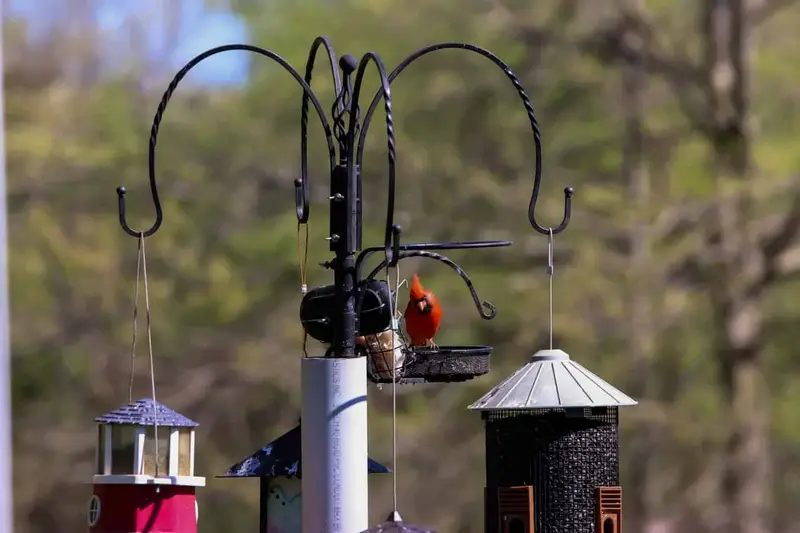
When you are looking to buy bird feeders, you will inevitably be met with recommendations
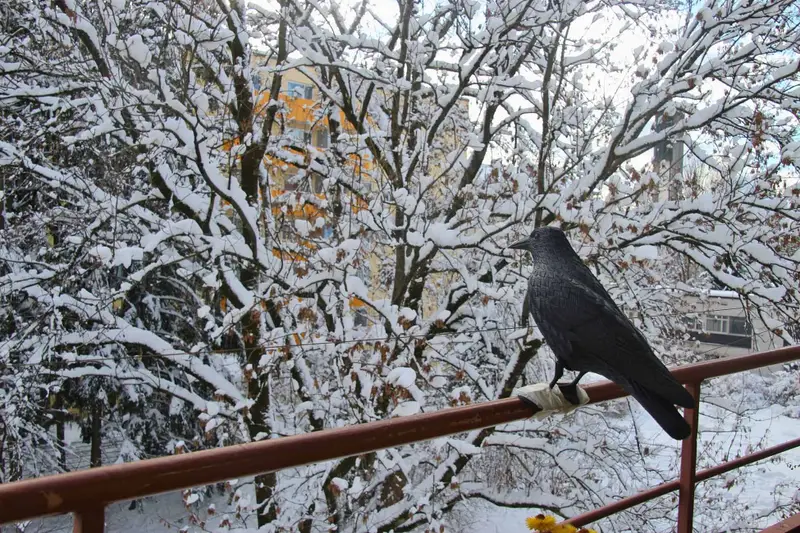
How to Attract Birds to a Window?
All birds can be attracted to a window feeder. Some will require bright colors to
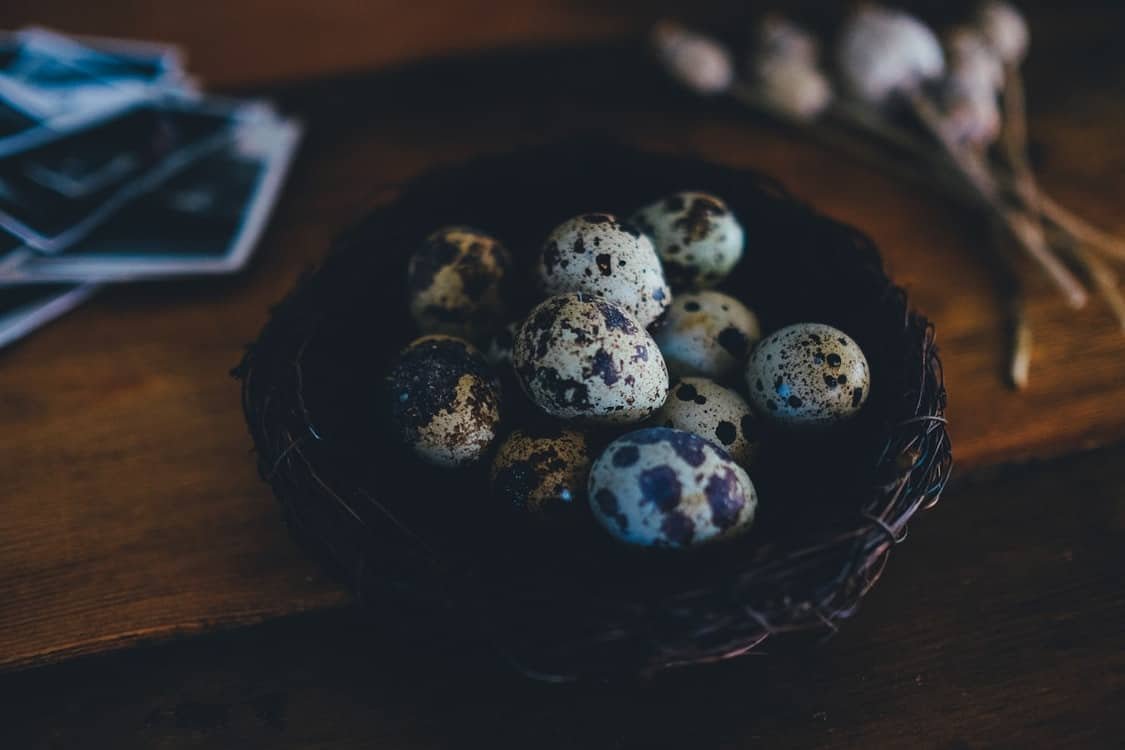
How to attract Quail to your yard?
Attracting quails to your yard might be easier than you first anticipate. These naturally shy

About Us
We are avid bird-watchers who recently retired, allowing us more time to travel the world. Fortunately, we have managed to visit numerous countries around Europe, Asia, and America. Watching and photographing birds has been a passion for many years and we are making the most of the extra time on our hands!

I thoroughly enjoyed your article on why owls hoot. I live in the eastern part of the Pacific Northwest and we have a lot of Great Horned Owls here, which brought me to your article as they were hooting this a.m. I love to listen to them.